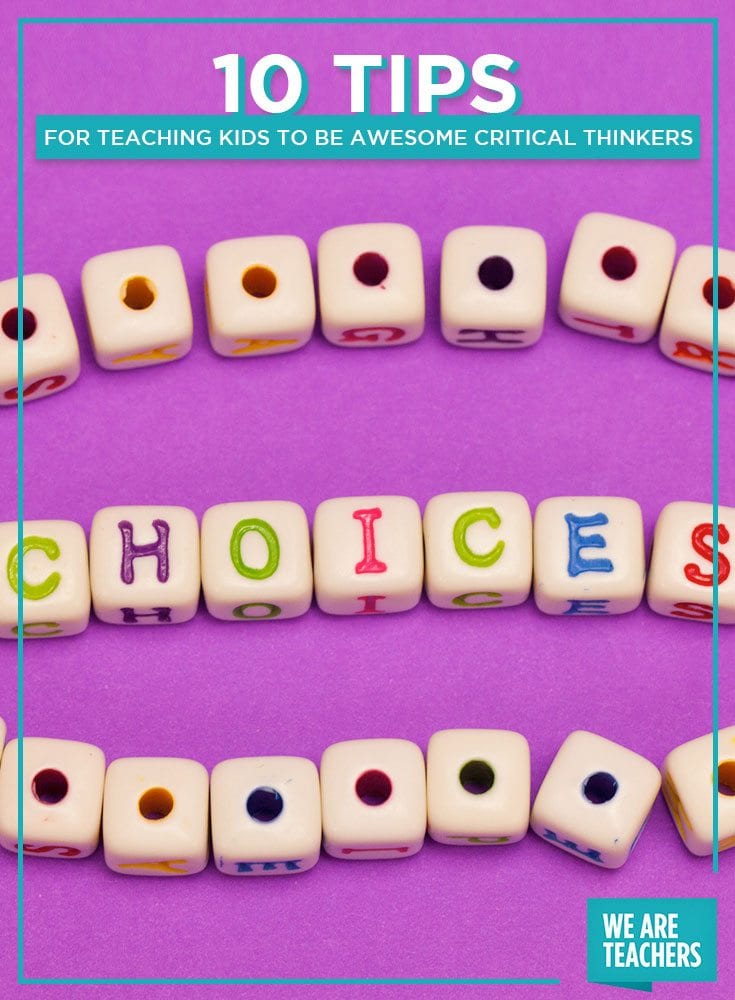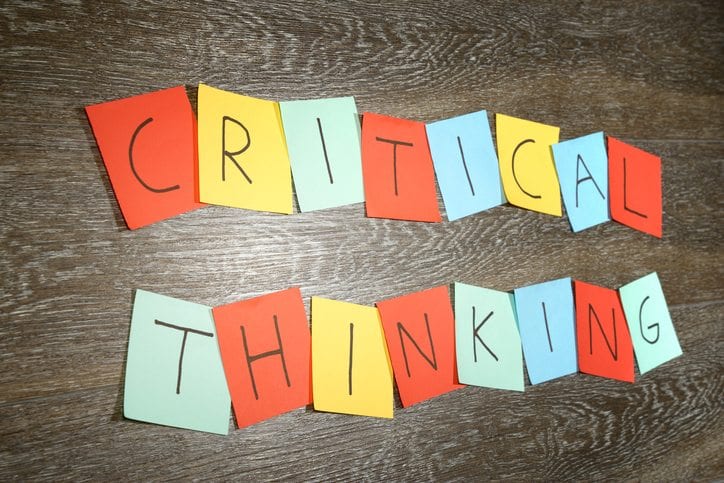Getting students to dig deeper and answer questions using higher-level thinking can be a challenge. Here are our favorite tips for teaching critical thinking skills, adapted from Mentoring Minds’ Critical Thinking Strategies Guide, that help kids solve problems by going beyond the obvious response.
1. Slow down the pace.
It’s easy to fall into a routine of calling on one of the first kids who raises a hand. But if you wait even just 3 to 5 seconds after asking a question, you’ll probably find the pool of students willing to give an answer grows significantly. Plus, it helps the speedy kids learn that the first answer that pops into their head isn’t always the best. There are times you may even want to wait up to a minute or longer if the question is particularly complex or time-consuming. To avoid an awkward pause, you can let kids know that they have 10 seconds to think before answering the question or that you need to see 10 hands raised from volunteers before you hear a response.

2. Pose a Question of the Day.
Put a new spin on bell ringers by asking a Question of the Day. Use a questioning stem (e.g., create a riddle that uses the mathematics term “multiply” in one of the clues or write a letter to a classmate recommending this book) and put it on the board. Students can write answers in their critical-thinking journals. Then have a class discussion at the end of the day.
3. Make a response box.
Write a random critical-thinking question on the board, (e.g., Is there a better way to work out this problem? Explain your thinking.). Give students a specified amount of time to provide a written response and put it in the response box. Pull out entries one by one and read them aloud to the class. Alternatively, you can give a prize—like a homework pass or free time—to the student with the first appropriate response whose name is drawn from the box or to everyone who submitted appropriate answers.
4. Take a side.
First, read a statement that has two opposing views (e.g., Do you agree or disagree with the author? Why?). Ask kids who agree to stand on one side of the room and those who disagree to stand on the other side. Then have kids talk about why they chose each side. They can switch sides if they change their minds during the discussion.

5. Ask “why?” five times.
When you encounter a problem in class, you can help the class come up with a solution by using the Why? Five Times strategy. Ask the first why question (e.g., Why didn’t the class do well on the spelling test?), and after a response is given, ask why four more times (e.g., Why didn’t students study for the test?, Why didn’t students have time to study for the test?, etc.). The idea is that after the fifth question is asked, the problem will be solved.
6. Role-play.
Come up with an imaginary scenario and have kids work through the steps to solve a problem as a class. First, identify the problem and write it as a question (e.g., Why didn’t the science experiment work as planned?). Then brainstorm ideas to solve it and choose the best one to write as a solution statement. Finally, create an action plan to carry out the solution.
7. Go “hitchhiking.”
Practice creative thinking by collaborating on a storyboard. Write a problem on an index card and pin it on the top of a bulletin board. Then put different headings on index cards and pin them below the main card. Have kids brainstorm ideas that develop each of the heading cards and let kids pin them on the board. Encourage kids to “go hitchhiking” by building onto their classmates’ ideas.

8. Turn around.
A great way to focus on the positive in not-so-positive situations is the Turn Around thinking strategy. If a student forgets to bring his homework to school, you can ask, “What good can come of this?” The student can answer with ideas like, “I will change my routine before I go to bed.”
9. Put your pocket chart to good use.
Choose six completed questioning stems from different levels of Bloom’s Taxonomy and put them in a pocket chart. Choose some strips as mandatory and let kids pick two from the higher levels to answer aloud or in a journal.
10. Hold a Q&A session.
One way you can figure out how well kids are grasping critical-thinking skills is by holding question-and-answer sessions. Ask a variety of questions one-on-one or in small groups and take note of the levels of thought individual students use regularly and avoid over time. You can review your notes to help build more higher-order-thinking questions into your lessons.
FREE E-BOOK! How to Build a 36-Week Character Education Program. Support social-emotional learning through a critical thinking lens with 36 projects and activities plus tips, research, and more!


